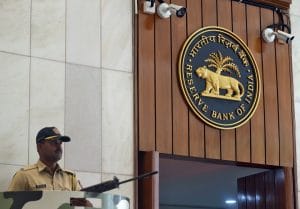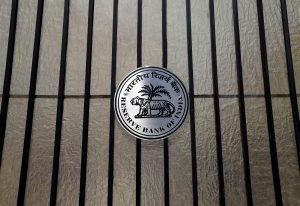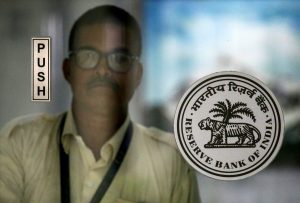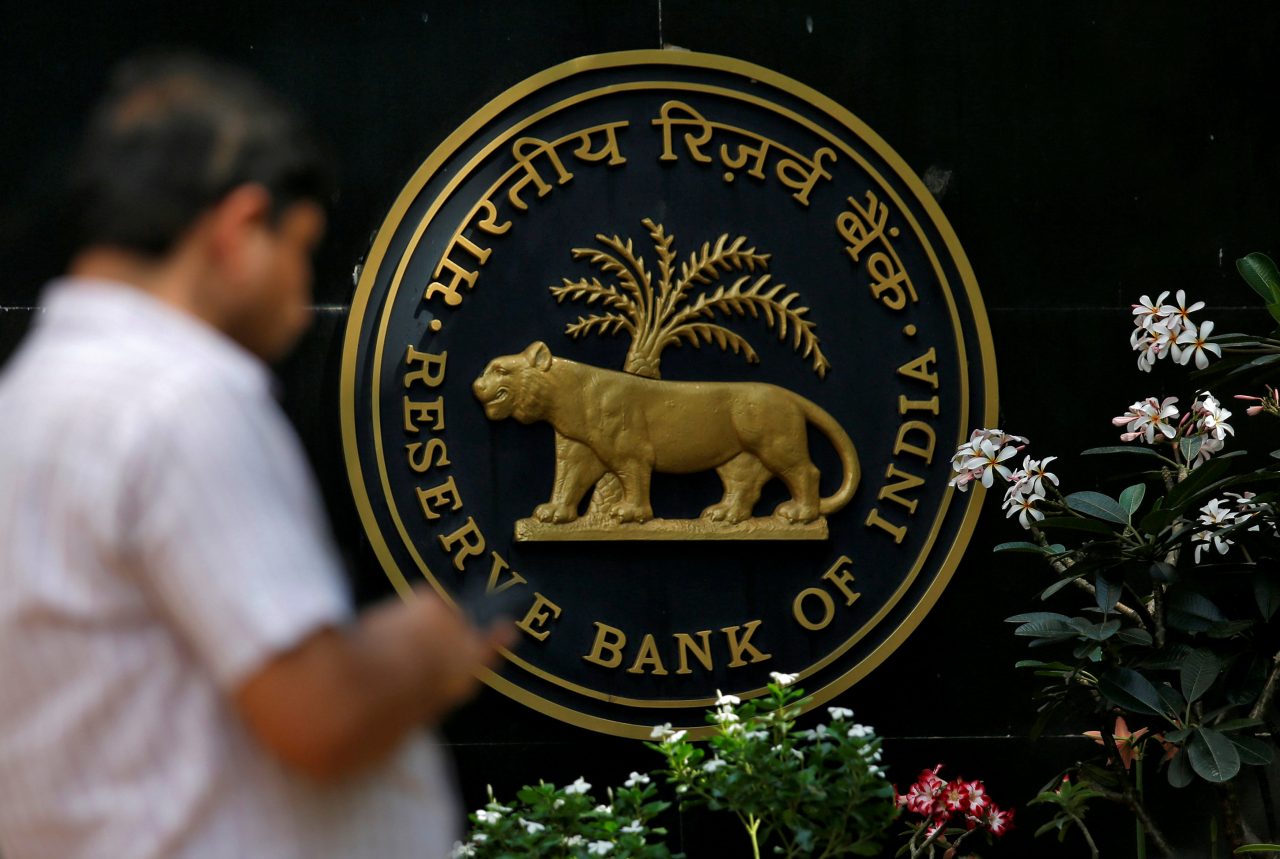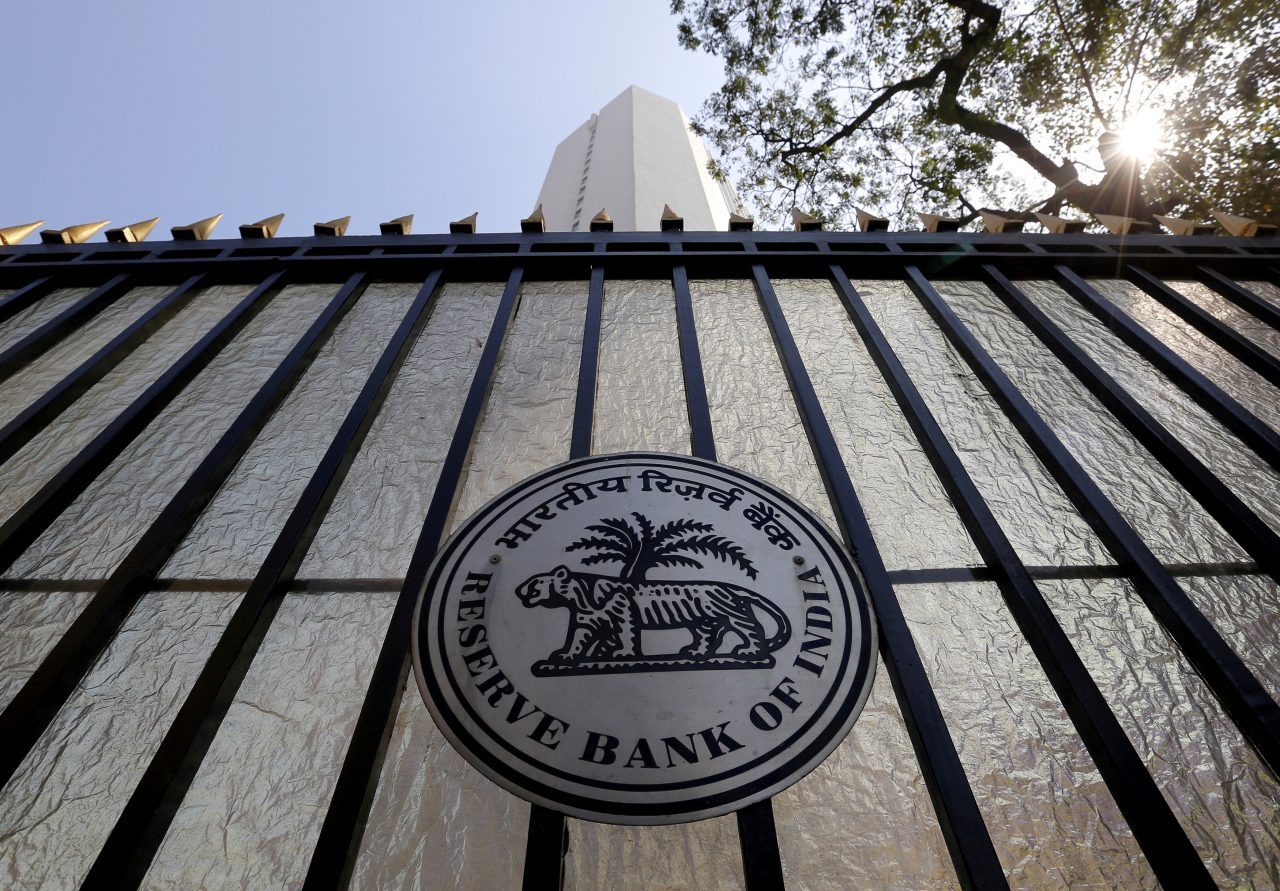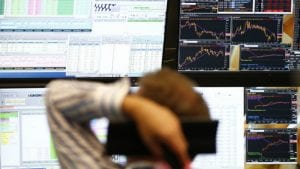RBI MPC meeting outcome on December 5: Here’s what experts have to say

KV Prasad Jun 13, 2022, 06:35 AM IST (Published)
 Listen to the Article (6 Minutes)
Listen to the Article (6 Minutes)
Summary
The three-day meeting of the MPC started on December 3, and the resolution of the committee will be made public at 2.30 pm on Wednesday, December 5.
The Reserve Bank of India (RBI) may support an economy that is losing momentum by leaving interest rates unchanged at the monetary policy committee (MPC) meeting on Wednesday, when just over a month ago most of them had predicted a hike.
Having resisted any temptation to jack up rates in October when the rupee was sliding to a record low against the dollar, RBI has been vindicated by the currency’s subsequent recovery, and by waning inflationary pressures thanks to falling food and oil prices.
The rupee is now nearly 6 percent off its low, and is expected to rally further as lower crude prices have also eased worries over India’s current account deficit.
Since embarking on a tightening cycle in June, the RBI has raised its policy repo rate by 50 basis points, with the last increase to 6.50 percent made in August.
One basis point is a hundredth of a percentage point.
CNBC TV18’s Citizens Monetary Policy Committee comprising Pronab Sen, former principal adviser; Sonal Varma, India chief economist, Nomura; Sajjid Chinoy, India chief economist, JPMorgan; Samiran Chakrabarty, chief economist, Citi; and Soumya Kanti Ghosh, group chief economic adviser, State Bank of India; opts for a change in stance in the upcoming meeting of RBI’s MPC.
Edited Excerpts:
What do you expect the RBI will do to its inflation forecast given the sea-change in fuel prices, what will it forecast for inflation when it meets on December 5?
Varma: The inflation numbers were undershooting the RBI’s projections even before the crude oil price drop happened and that was primarily because on the economy, we continue to see significant undershoot and now with oil prices down almost $25 per barrel from the peak, the second half FY19 projections in our view looked to undershoot almost by 100 basis points (bps) and even in the April to June of 2019, we think that inflation could be close to 50 bps below the projection.
So I think the combination of positive supply side forces coming in from oil, from food and also to an extent on the rupee is now sort of combining with the demand shock that we think will play out because of the tighter financial conditions which will also bring down core inflation with a lag. So yes, there is a case for a significant downward revision on the inflation trajectory.
Do you agree with Sonal Varma about the need to lower the inflation forecast and also will they do anything to their growth forecast?
Chinoy: I would first sympathise with policymakers for having to make policy with just extraordinary volatility. When oil prices move $10 per barrel every week, for example, it is very hard to track these moving parts. I largely agree with Sonal Varma. I think what you are seeing is both – since the last policy review – a very different global and domestic macroeconomic environment.
We should spend a minute on what is happening globally, which is global growth risk are now skewed firmly to the downside, US growth was driving the global economy, that is going to fall off as the fiscal stimulus fades, Europe disappoints to the downside and China’s growth risks are also skewed very much to the downside.
So I think that itself exerts some disinflationary forces. If you were to add that to the fact that oil is 30 percent lower that you have had this now five-year process of food disinflation, it is clearly a structural secular component to it, this is not about one month or one commodity and I agree with Sonal Varma, I think India’s growth risks are skewed to downside, there is a tightening of financial conditions in the non-banking financial companies (NBFCs) sector, at the margin, their incremental growth was third of what the banking system was providing.
So it is hard to imagine that kind of growth rate continuing. But I also think that the government is committed to the fiscal deficit number and my sense is we may have to experience some expenditure compression in the coming months to meet that fiscal deficit number.
There are offsets here. One offset is oil at $60 per barrel versus oil at $85 per barrel means the negative terms of trade shock from oil is much lower if any compared to last year and secondly the rupee is down in trade-weighed terms 10 percent and that should have some expansionary impact even though that will be offset by weaker global growth.
Bottomline, there is enough evidence to suggest that a downward revision in inflation forecast is now warranted like Sonal Varma, we are about 50-60 bps below. On the growth front given the uncertainty, I would just perhaps expect the RBI to flag that the risks are to the downside without having to change numbers materially at this point. Just given the quantum of uncertainty.
Can you take off from where Sajid Chinoy left off on growth? Even the second quarter had a positive base, 6.3 only year ago and the debt crisis had not hit in Q2, IL&FS and the tightening of the debt market happened only after September 20th, Yet Q2 GDP is only 7.1 percent, so isn’t there a worry and even credit growth, as Sajid Chinoy pointed out, NBFC credit growth, is it really being made up by banks?
Ghosh: I think there is some valid point in terms of the growth consideration, what Chinoy said and my sense is that growth is going to slow down significantly in the second half.
So RBI will change the number?
Ghosh: I don’t think it will change the number even but it can actually flag the downside risk to growth. So that is one point.
The second important point is that, I think everybody was expecting that a Q3-Q4 growth should decline but the gross domestic product (GDP) numbers suggest that the growth has started to go down in Q2. For example, if you look into the credit growth of the scheduled commercial banks, the total number this year has been around Rs 3.3 lakh crore expansion, out of which Rs 2 lakh crore happened in September. This number has declined to Rs 30,000 crore in October. That means the total incremental credit expansion in the month of October for all scheduled commercial banks is 15 percent of that what happened in September.
So out of Rs 3,20,000, Rs 2,30,000 is in September and October and the rest Rs 90,000 is from April to August. So that means the monthly run-rate was Rs 18,000 crore from April to August that is now at Rs 30,000 in October. So we are actually mean reverting to the trend growth rate, which is from April to August. That is not a good sign.
We are witnessing a credit slowdown across all sectors, industry has been negative, in fact, the agricultural credit is also growing at a much slower pace because of the drought condition and loan-waiver and NBFC credit growth which was around Rs 56,000 crore incrementally in September is now around Rs 16,000 crore. So all evidence suggests that possibly the growth slowdown has come a little earlier than anticipated and my sense is that the Q3 and Q4 numbers we could be in for some amount of moderation.
How much?
Ghosh: It would be definitely sub-7 because we definitely running with a sub-7 number for Q4 and with 7.1 percent growth number for Q2, I think Q3 numbers could have a significant downside.
I think the growth-inflation argument has been made quite strongly, what about liquidity? Is it time the RBI flags that they would like just not neutral but maybe surplus liquidity and can they do something about it other than just OMOs?
Chakrabarty: If you see the concept of having neutral liquidity stance, it is tough to change it very quickly, it has to be more of a thought through decision. Now, opportunistically you can change this depending upon what your growth-inflation dynamics is but I suspect even to come back to neutral liquidity and maintain neutral liquidity in the January-March quarter where seasonally things are tighter and as Chinoy was mentioning if there is some kind of fiscal compression then liquidity will be even tighter beyond what the seasonal tightening is.
So the requirement for OMOs are substantially higher over the next few months. The only thing that has changed is that because of lower oil prices the BoP incrementally could turn positive. So to that extent, the RBI has option of buying forex, killing two birds with one stone – on one hand you can replenish the forex reserves and on other hand you can infuse liquidity without having to do OMOs.
So that option is very much there. An outside chance is CRR (cash reserve ratio) cut as well. But I suspect when the RBI has just changed to a calibrated tightening stance in their monetary policy, CRR has somewhat of connotation of monetary policy associated with it, so that might not be the one that gets used so early in the day.
The Reserve Bank in a previous analyst call has not thought highly of CRR as an instrument for liqudity, they are very clear that liquidity is tackled by OMOs, inflation is tackled by repo – they want cleanliness of instrument. Sen I want to pick the other side, if there is one. There can still be fiscal slippage. The fiscal numbers that came looked extremely difficult – already by October, it is 3 percent more than the fiscal deficit for the full year, tax revenues are hardly picking up and finally core inflation is above 6 percent. So is there another side?
Sen: Yes there is in fact. Look at what is happening – on one hand you have got a situation where the overall growth rate of the economy has been weakening steadily over the course of this year and things are starting to look worse now.
Think of government’s problem, we are already in December. If they want to give a fiscal stimulus the only way they can do it is that if within the next couple of weeks they come up with a fresh set of demand for grants, I don’t think that is happening.
The time is too short, there is complete unpreparedness for it. So on that front seeing additional expenditure commitment, I don’t think is going to happen. The question is if they were actually planning to cut back on certain forms of expenditure or delay the payouts that may not happen, they may actually go ahead with the expenditure programme as given in the Budget. That is the maximum they can do.
So I wouldn’t worry about the fiscal stimulus per se in the coming quarter.
What I would factor into account on the other hand is that the next quarter will be the pre-election quarter and historically, the pre-election quarter has seen all the political parties open up their war chest and start splurging and that is the demand boost which has happened every time before and it is more than likely to happen this time perhaps even more than earlier.
That is the only silver lining that I can see, otherwise a rather dismal real economy trajectory.
So, therefore the position is that it is weak inflation, weak growth that the MPC will have to counter. Do you agree with that?
Sen: I completely agree with that.
Sonal, You said in all likelihood the RBI will lower its inflation forecast because it is already undershooting – what about the stance. The RBI has just changed to calibrated tightening from neutral just in October – given these forecast do you expect them to change the stance back to neutral?
Varma: You are right, that is going to be the big challenge that they face this time, changing the stance again in December would be a fairly quick about turn. From our perspective, we were actually very surprised with the change in stance in October because when the MPC met in October the downside risk to growth were already starting to be quite visible.
I think it is matter of time before the stance will need to change back to neutral from calibrated tightening because if you have a positive supply shock and a negative demand shock then clearly we are heading into a regime of lower growth and lower inflation and I think with a lag we will see core inflation also converge towards headline inflation. So inflation is very much within the mandated band with near-term risks clearly to the downside. And the risk on the growth front, with growth numbers incrementally us thing the growth could head to sub-7 percent very soon.
So, having a stance of calibrated tightening clearly has to move towards neutral stance. That may, may not happen in December because it is a bit too soon but our view is that it should.
Sajjid, What would you watch out for?
Chinoy: I would just watch out for how the MPC is estimating both growth, inflation. At the last policy, the sense was growth is doing well, has been strong and the fact that there were still slew of inflation risks that the MPC had cited. So, I would just look for more than whether the stance changes now or February.
I think the complicating factor here is that there are disinflationary forces globally and disinflationary forces domestically. But even though US growth is going to slow, we still expect the US Fed to raise rates five-times in the next five quarters – a rate hike in December and four rate hikes. That really makes it very difficult for emerging markets to consider cutting interest rates next year because the volatility associated with financial markets through the exchange rate as we have seen earlier in the year, can it self-impart inflationary impulses.
That is the part that makes it difficult, growth-inflation would suggest weaker growth, certainly a positive supply response, inflation within the band. But you have got a global environment in which the financial conditions will continue to still steadily tighten. That is the balancing act that EM central banks will have to take into consideration.
I thought after Powell statement global challenge is little more muted, we don’t know, it could be that Powell also because of attack under Trump has made a tactical withdrawal – Samiran what do you expect will the global tightening continue? What can the RBI do by way of action you yourself said that CRR could be tactically good but they are not very interested. So how will they assess the global environment and what can they do in terms of action?
Chakrabarty: I suspect RBI really gets swayed too much by changing Fed rate expectations. The markets keep on expecting sometimes 5 rate hikes to sometimes 2 rate hikes depending upon one comment of the Fed Chair. So, I guess RBI will be more concerned about not just what the near term inflation dynamic says, but what is the one year ahead inflation forecast.
So, in December policy we are going to see the December 2019 forecast for the first time from RBI and because this base of 2018 October- November- December has been extremely weak on inflation, how high that forecast is, is going to be very critical for me.
Because on that bases they can cling on to their current stance of calibrated tightening because if that number is higher than they can claim that inflation risk are there and just to add to it two other points. One is that the rabi sowing has been significantly lower than last year more than 20 percent lower, so when that crop comes in to play how much impact that could have on food inflation is something that we don’t know.
Sugar prices are already rising?
Chakrabarty: The last point is that in the October policy there was a lot of emphasis given on inflation expectations. Almost every MPC member talked about it. I want to see in December with oil price correction whether that inflation expectation numbers have moderated or not because in my view that has significant influence on how the MPC will talk about at least their stance.
You are expecting them to maintain a neutral stance in their statement or do you expect them to tilt towards dovishness?
Chakrabarty: They will obviously have to tilt towards somewhat dovish because the data has changed. However, whether they will show the kind of dovishness that the market wants them to show? I am not too sure. If you see, we went into the October policy with the expectation of three rate hikes in the market; in two months that has come down to zero.
Now would the market stay comfortable with that zero rate hike assumption or would the RBI tonality make them to talk about one more rate hike at least is something which I am not very sure because I do not see a reason why at 6 percent core inflation they will be able to guide the market of a future rate cut at this juncture.
Soumyo, what do you expect the guidance to say? There are some people in the market who believe that the statement can be so worded that they can hint that we will be data dependent and even a cut is possible? Do you think they will go that far in guidance?
Ghosh: I think a very interesting point Samiran made is 12-month forecast, December 2019, but an interesting thing here is when you look at the act which has been finalized between the RBI and the central government, it is a forecast for the next three quarters. So technically if you look into that, the December argument of inflation, they can say that December inflation numbers could be on the higher side, but technically for three quarters means we do not get into third quarter of last year.
Now, regarding what it could guide the market, I agree with Samiran that at 6.2 percent core inflation, even that you are going to moderate significantly second time, it will be difficult for them to say anything on cutting the rates. What I would like to say in the policy is that the central bank should make a statement of how to build-in the uncertainty regarding the policymaking. For example, the fan chart which the RBI gives out in terms of the inflation numbers, for example, Bank of England always gives out a value of probability to each of the fan chart. So I would like to see what the fan chart gives out in terms of the associated probabilities of the different inflation numbers, say whether it is 4 percent, 3.5 percent, 4.5 percent. So that would be a very good way of looking into what the RBI is trying to say.
Also, I would like the RBI to actually guide the market in terms of the monetary policy report which basically is a very well written report and that can guide the market in terms of the liquidity expectations because the information in the report could help the central bank, explain to the market its strategy making, its policymaking.
There is no report for December, the report comes only in September and April. So they have to say whatever they have to say in the statement. However, do you expect them to be as dovish as letting the market expect a cut?
Ghosh: No, I don’t think they would be dovish. They will be careful in terms of the downside expectations but since crude is still in the uncertain territory, I do not think they will venture out to be as dovish as we might expect.
Chairman Sen Can you wrap up the comments. I do not know whether we should also put one more variable or parameter into the discussion, the government and the RBIs relations are not in the best of terms and at such a time there will be a lot of pressure that the RBIs real rates are really too high at this juncture for no fault of theirs. Everybody was asking them for a hike in October. Given that backdrop and the impending elections, what do you think the monetary policy committee should guide?
Sen: I think one of the things that we need to take into account, is in October I had expected them not to change the stance. I think Sonal and I were the two who had said keep the rate on hold, don’t change the stance. They were reacting to short-term movements; if you read what they said, they were reacting to two things, they were reacting to oil prices and the belief that oil prices will stay elevated into the foreseeable future, and they were seeing the MSP hike as being a game changer as far as agricultural prices were concerned. Neither of them happened.
Now for the RBI to say we just changed our stance in the last one and therefore we would lose face by changing it this time around, I hope that does not happen. The fact is RBI has been significantly behind the curve as far as liquidity is concerned. They have just started the process of bringing liquidity back to some semblance of normalcy. There is going to be a certain amount of unpredictability in it, if I were them, I would be shifting to neutral just because of that uncertainty. Holding it in this hawkish position, I think would be wrong.
It is time to vote. The first question is going to be what will be the action and the second question is going to be what will be the change in stance, what will they do to the stance. Sonal on the rate action what are you expecting?
Varma: A pause.
What do you think the RBI will do, MPC on December 5 in terms of action?
Chinoy: A pause.
What is the action expected?
Chakrabarty: A pause.
Soumya?
Ghosh: A pause.
It is an overwhelming pause, what are you expecting?
Sen: Hold.
What are you expecting in terms of a change in stance? Is there a change in stance, when will they change, this policy itself?
Varma: We are expecting a change in stance, back to neutral; maybe not in the December policy, but either the February or the April policy.
Sajjid, stance?
Chinoy: A similar response that it is possible. I think it is too soon right now, assuming all the variables remain where they are, February or April.
Samiran, expecting a change in stance?
Chakrabarty: No change right now, data dependent, depending upon that they can decide to do it somewhere in the next couple of policies.
Soumya?
Ghosh: There will be no change in this policy, but I agree that if the situation continues to remain volatile, a change in stance could be forthcoming in the February policy or more in the April policy.
Sen Should they change the stance?
Sen: My opinion is they should change the stance. Whether they will do it now or do it later is a question. However, I think calibrated tightening is not a viable stance at the moment.
With inputs from Reuters.

Elon Musk forms several ‘X Holdings’ companies to fund potential Twitter buyout
3 Mins Read
Thursday’s filing dispelled some doubts, though Musk still has work to do. He and his advisers will spend the coming days vetting potential investors for the equity portion of his offer, according to people familiar with the matter

KV Prasad Journo follow politics, process in Parliament and US Congress. Former Congressional APSA-Fulbright Fellow










 Listen to the Article
Listen to the Article  Daily Newsletter
Daily Newsletter





